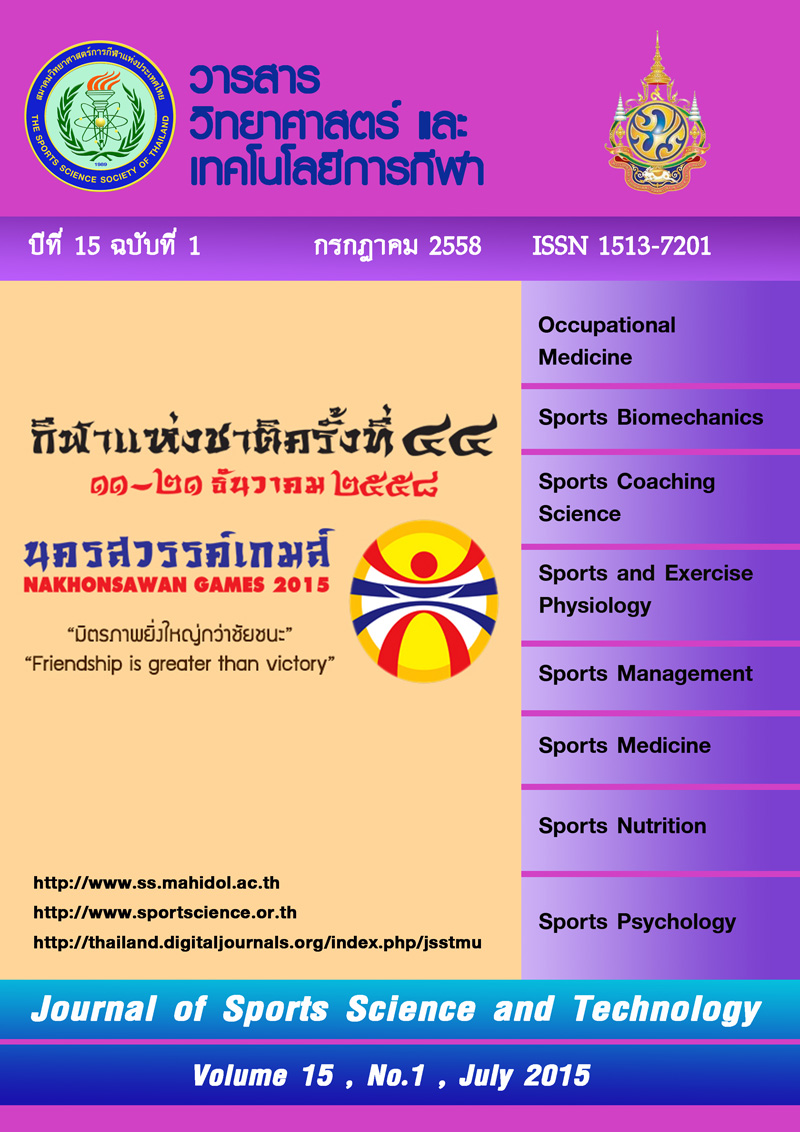EFFECTS OF PALMS COOLING ON THE THERMOREGULATORY RESPONSES IN MALE TENNIS PLAYERS
Keywords:
Thermoregulatory / Palm Cooling/ Cooling Effect / Tennis / PerformanceAbstract
The aim of this study was to investigate the effects of palm cooling using the double hands rapid cooling (DHRC) device on the cardiovascular and thermoregulatory responses, and performances in a hot environment (Wet Bulb Globe Temperature = 31°C) in male tennis players. Twelve male collegiate tennis (mean age of 21.8 ± 2.3 years, weight 66.72±4.9 kg. and height 174±5.1cm) participated in two experimental trials 1) DHRC and 2) Control (N-DHRC) group. The protocol was repeated 12 games in the simulated tennis matches in a randomized manner. Physiological variables and subjective responses included intestinal temperature (Tint), heart rate (HR), rating of perceived exertion (RPE) and thermal sensation (TSS) were measured during the first 30 second of 90 seconds break at the odd number of games: 1, 3, 5, 7, 9, and 11. During the breaks, subjects sat in upright position with or without the application of palm cooling in DHRC device, respectively. In DHRC trial, cooling was applied by placing both hands into the device (10 ºC) for 60 seconds of the remaining rest period. Services and ground stroke accuracy were tested before and after the simulated match. Two-way analysis of variance (ANOVA) with repeated measures was used to evaluate for significance of main effects (trial and game), and interaction (trial x game). A paired t-test was performed to compare the difference between trials at rest and at the 1st game (before beginning of the intervention). Results showed that mean wet bulb globe temperature (WBGT), as well as HR and Tint at rest and after the 1st were not different between N-DHRC and DHRC trials. During the progression of games, an increase of Tint in DHRC trial was significantly slower than N-DHRC conditions (3rd to 11th game). An increase of HR following the 3rd game was greater in N-DHRC compared with palm cooling; DHRC. Significant interactions between trials and number of games on Tint, and HR were observed with less increase in DHRC trial. Mean ground stroke accuracy score after the simulated match was greater in the DHRC trial with significant interaction effect. Wilcoxon matched-pairs signed-ranks tests indicate significant lower RPE in DHRC. In conclusion, palm cooling using the DHRC during the 1-min rests between games of simulated tennis match in the heat can effectively lower thermal and cardiovascular strain, and perception of exertion. Additionally, fatigue was less with the application of double hands cooling presenting by a better retention in tennis skill and cardio-respiratory endurance performance.
(Journal of Sports Science and Technology 2015;15(1): 79- 89)






